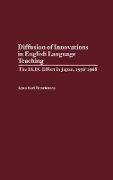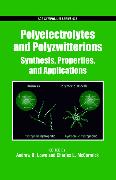Diffusion of Innovations in English Language Teaching
BücherAngebote / Angebote:
Through an investigation and description of the campaign conducted by the Rockefeller-funded English Language Exploratory Committee (ELEC) to revolutionize English-language-teaching practices in Japan, Henrichsen addresses the issue of how internationally oriented reformers of educational systems and practices can go about creating change and dealing with resistance to it. Henrichsen contends that innovation alone is rarely sufficient to bring about change and that simply communicating the innovation to the target audience is usually inadequate. He argues that creating change across cultural boundaries requires both a careful analysis of the target setting, one which takes into account the potential barriers to change, and an appropriate implementation strategy to overcome those barriers.In analyzing the ELEC reform campaign, Henrichsen develops and employs a hybrid diffusion-of-innovations model which represents both the diffusion/implementation process and the multitude of factors which affect it. This model, coupled with the example of the ELEC effort, provides planners of other reform campaigns with an understanding of what these factors are, how they are interrelated, and how to deal with them. Henrichsen's study is divided into six chapters, beginning with a justification for studying the diffusion and implementation of innovations. Chapters Two and Three provide background information and a chronological overview of the ELEC effort and introduce the model that is used as the framework for subsequent chapters. In Chapter Four the historical development of the Japanese English-language-teaching system and the influence of socio-cultural forces on language teaching in Japan are considered. Chapter Five analyzes the ELEC effort including characteristics of the innovation (Charles Fries' Oral Approach), the ELEC resource system, the Japanese English-language-teaching user system, and a number of other critical inter-elemental factors. Finally, Henrichsen discusses the consequences of the ELEC effort and draws some general principles from the particulars of this historical case study. This unique work will be of interest to anyone involved in the teaching of English to speakers of other languages or interested in the promotion of innovations in education or other fields.
Folgt in ca. 15 Arbeitstagen




